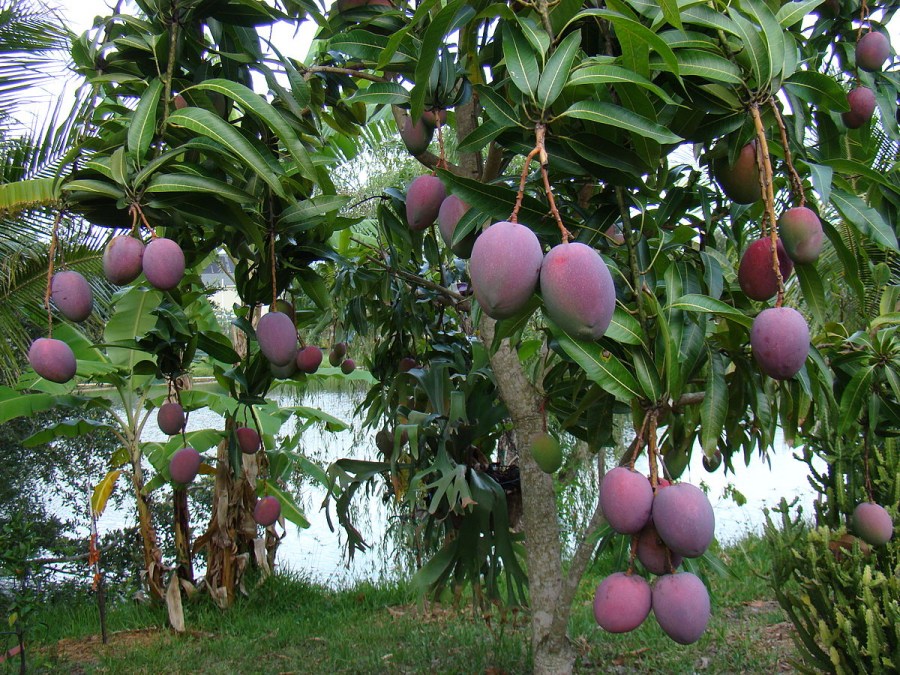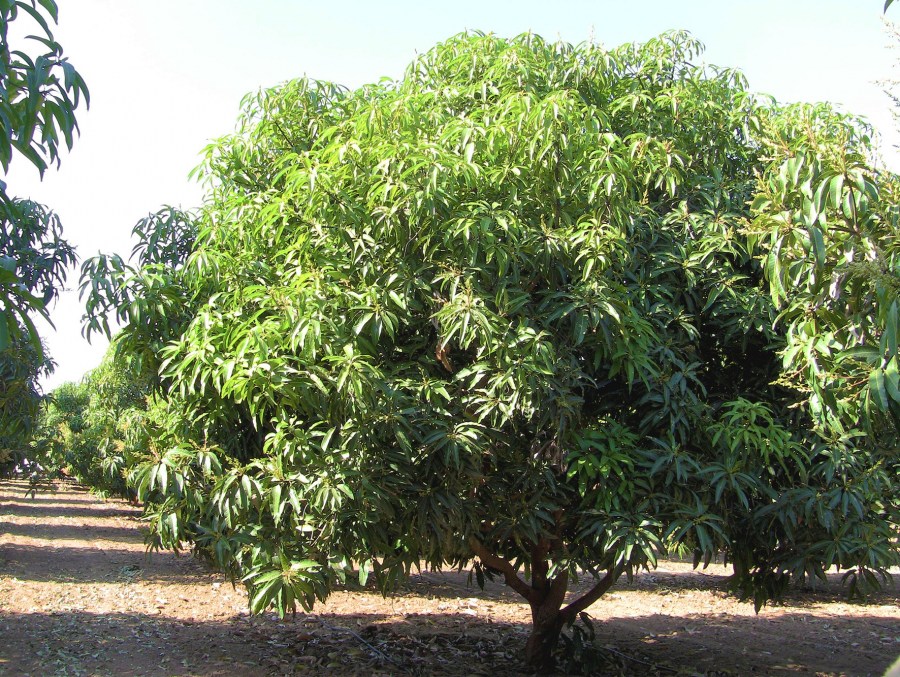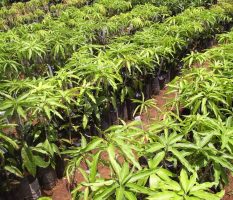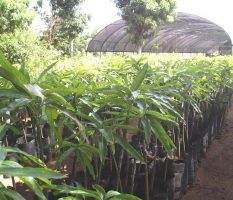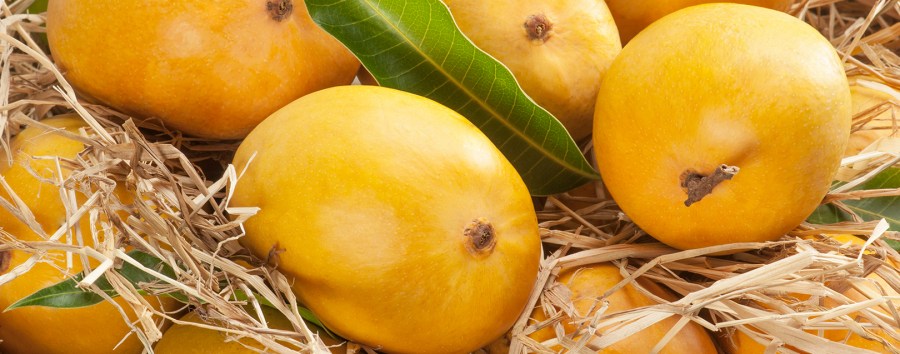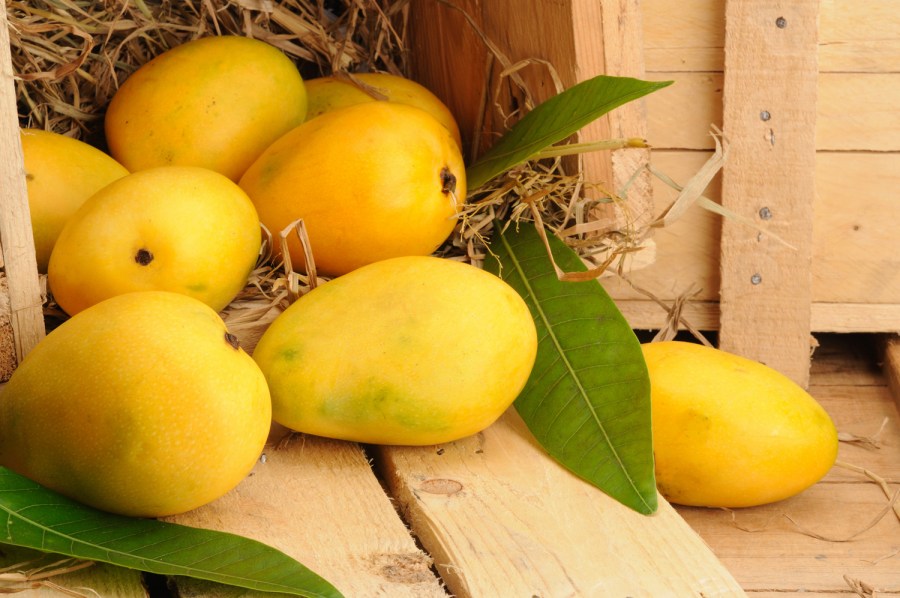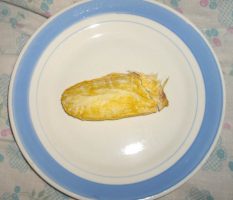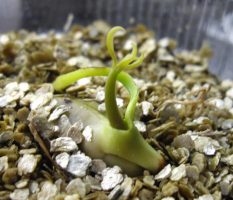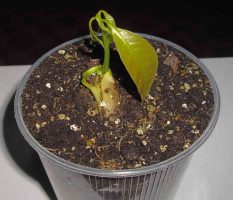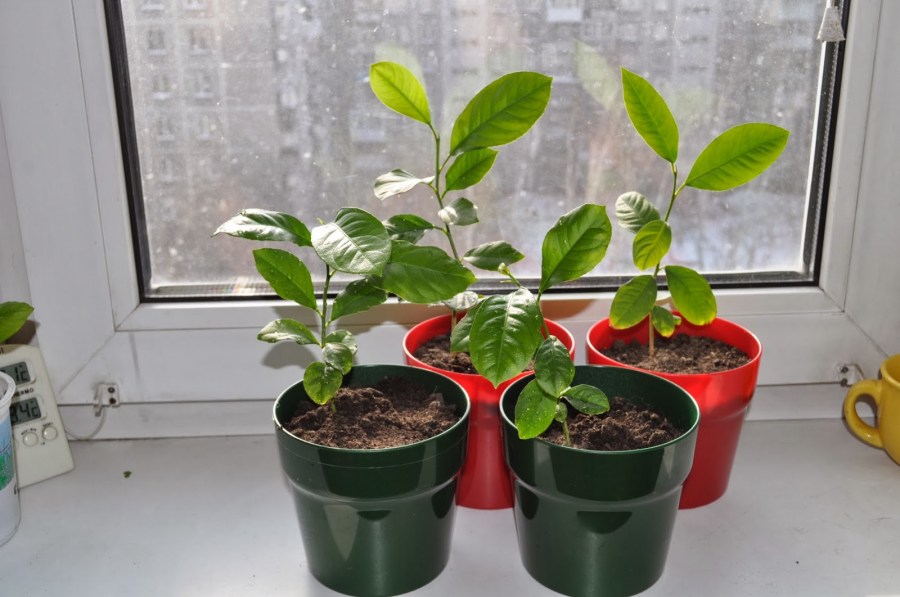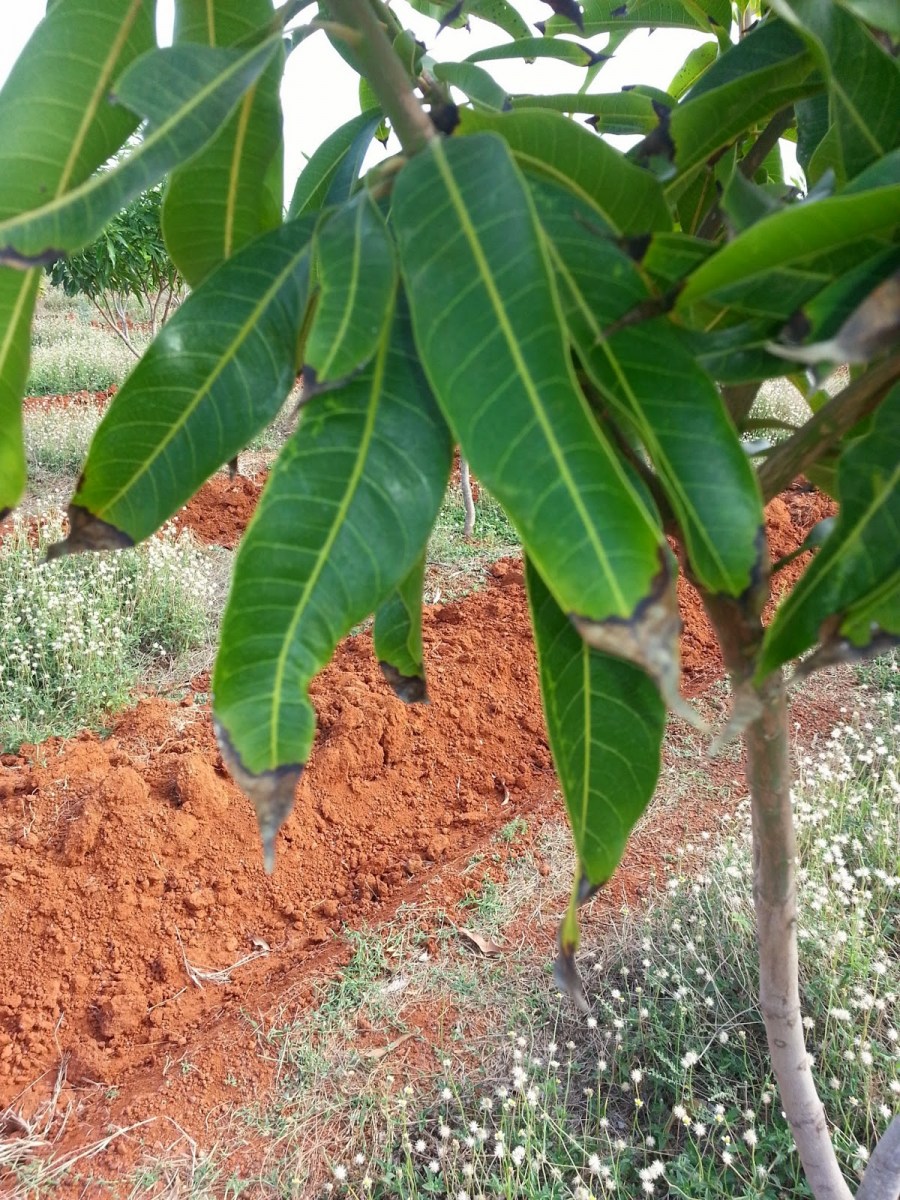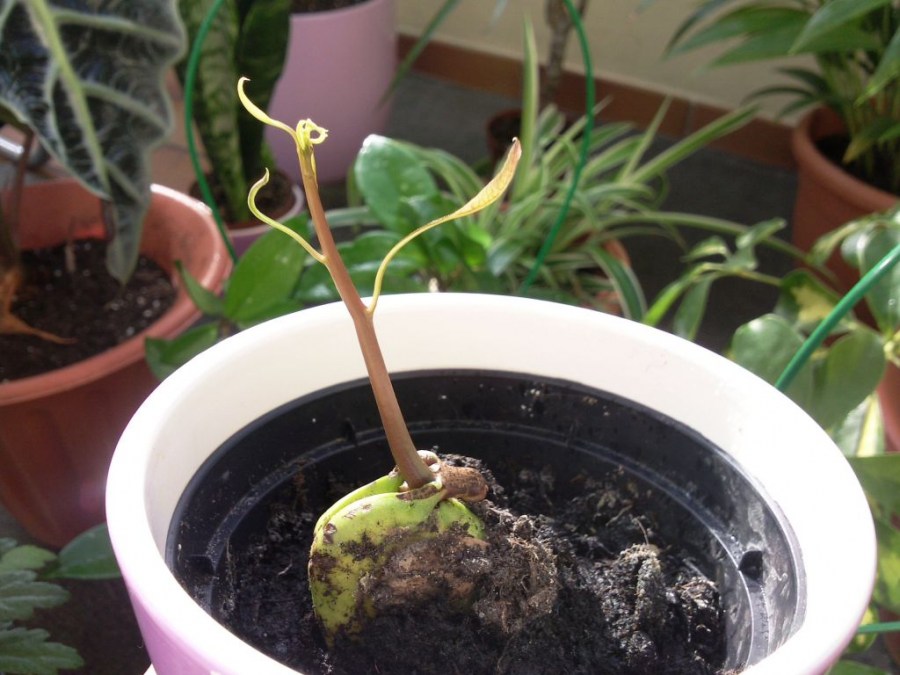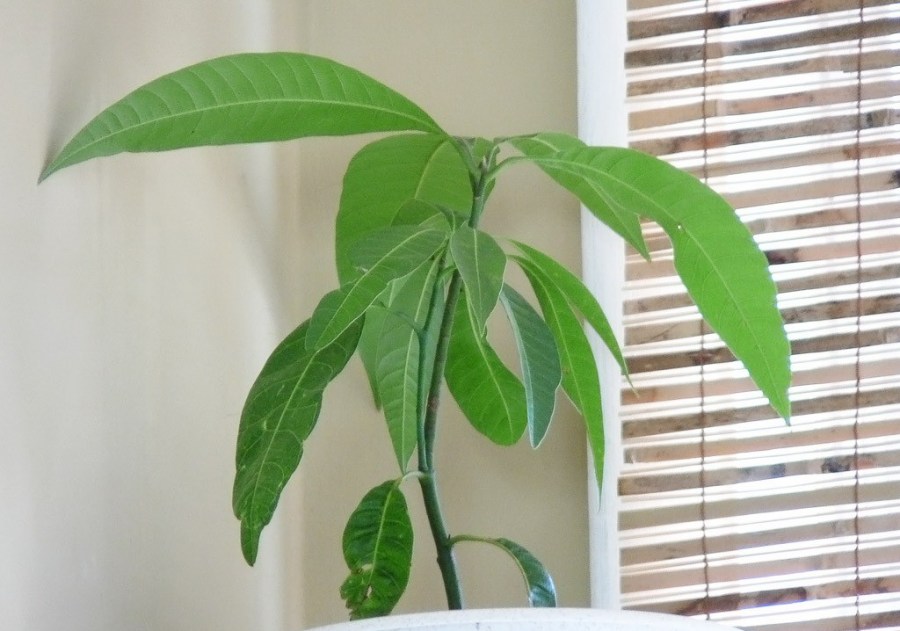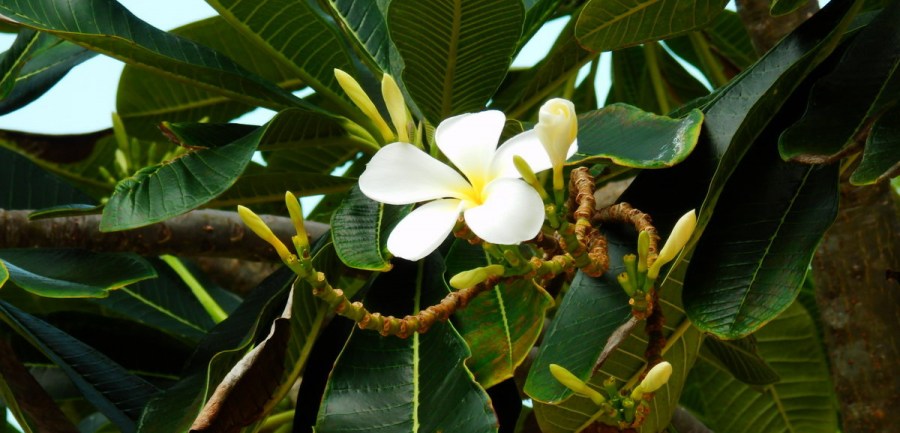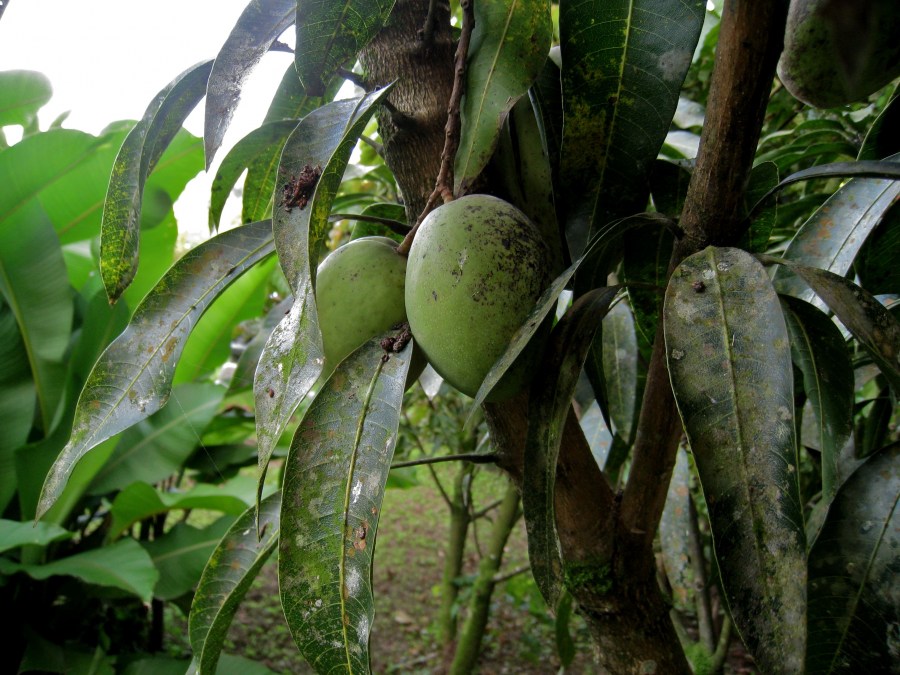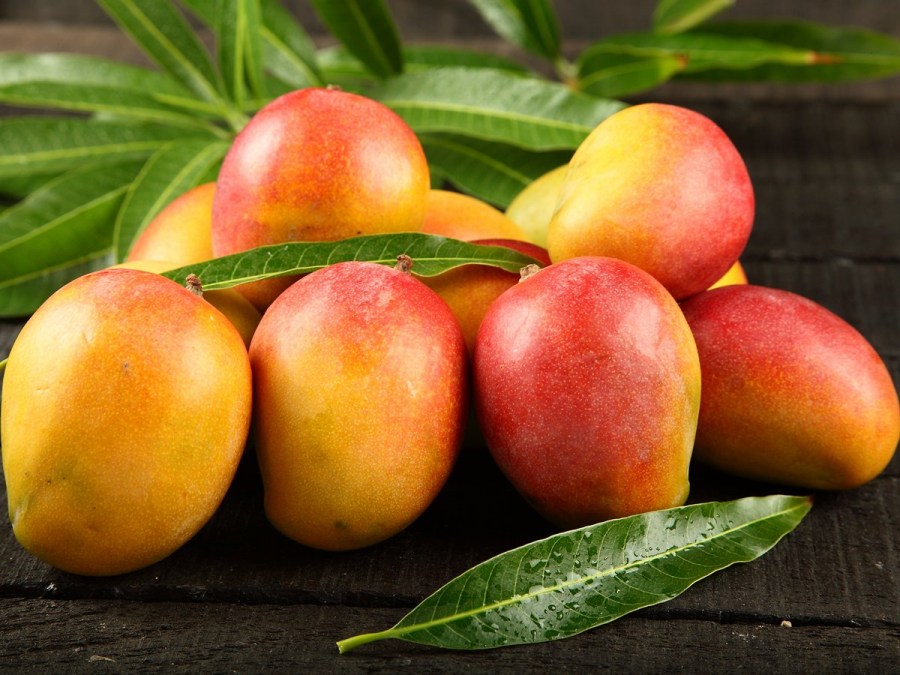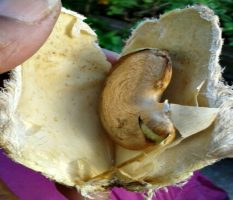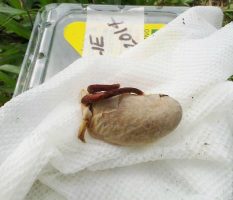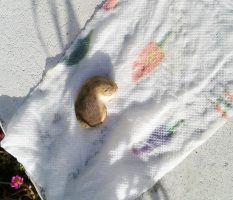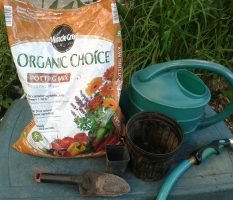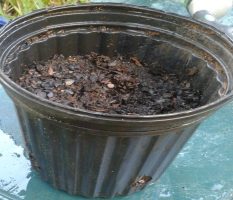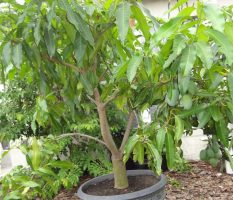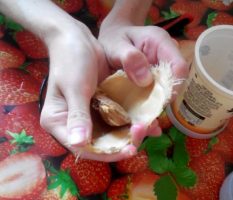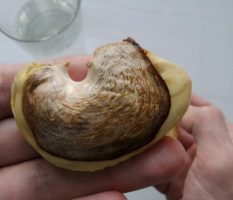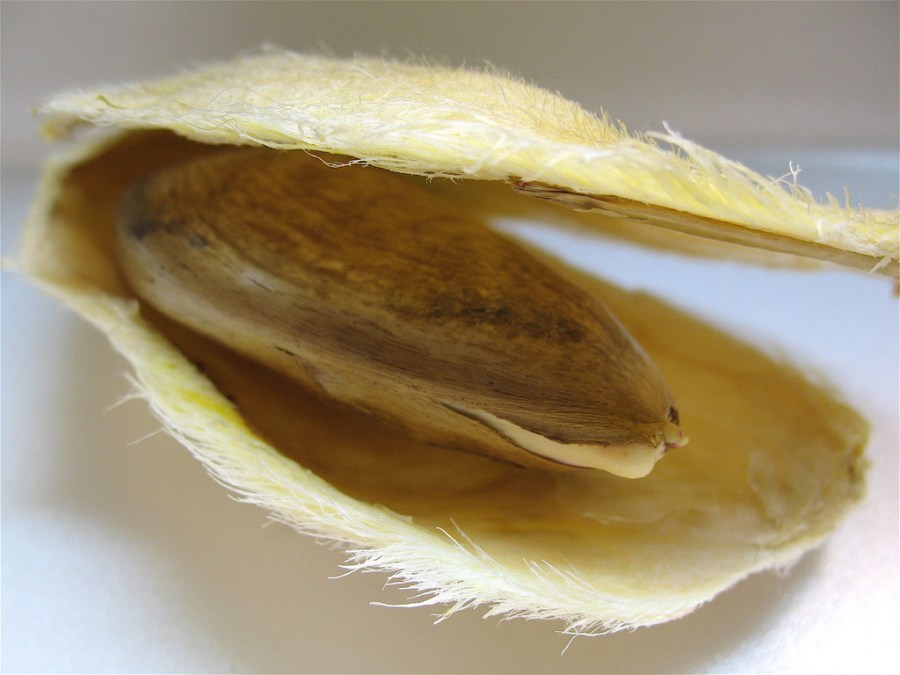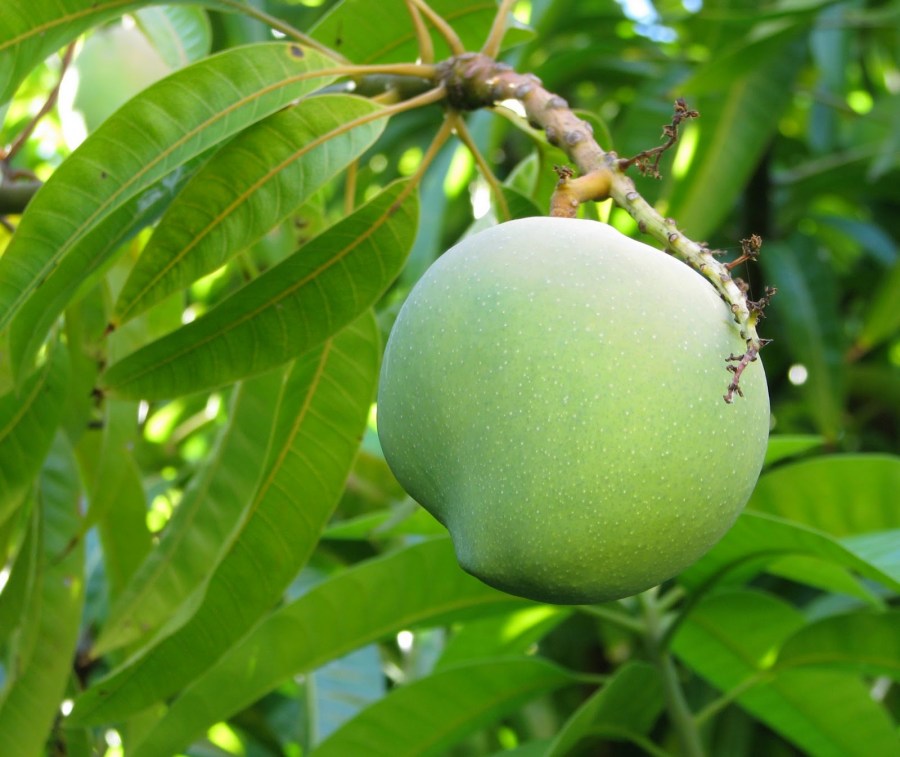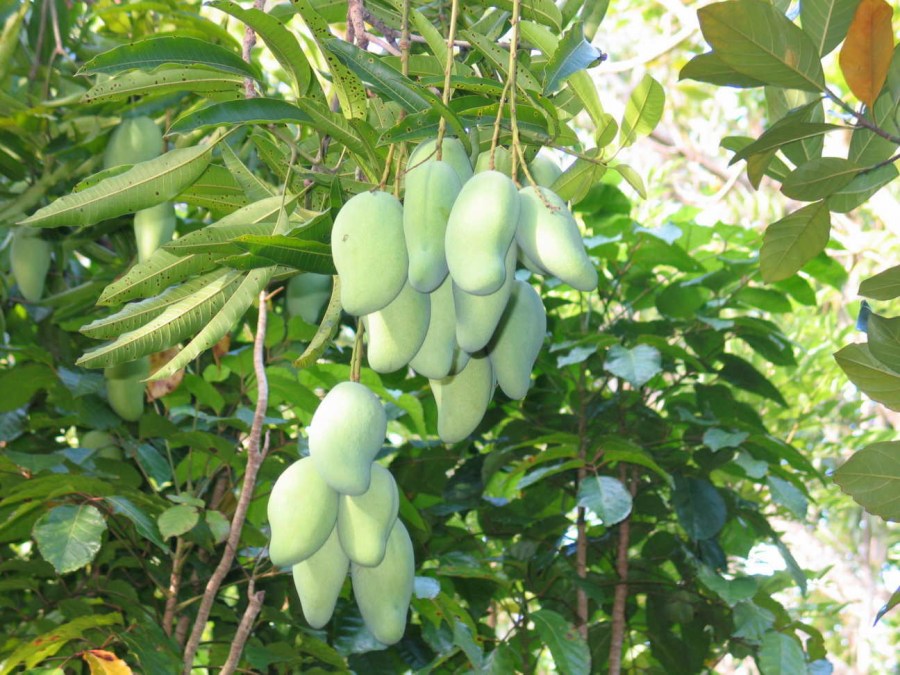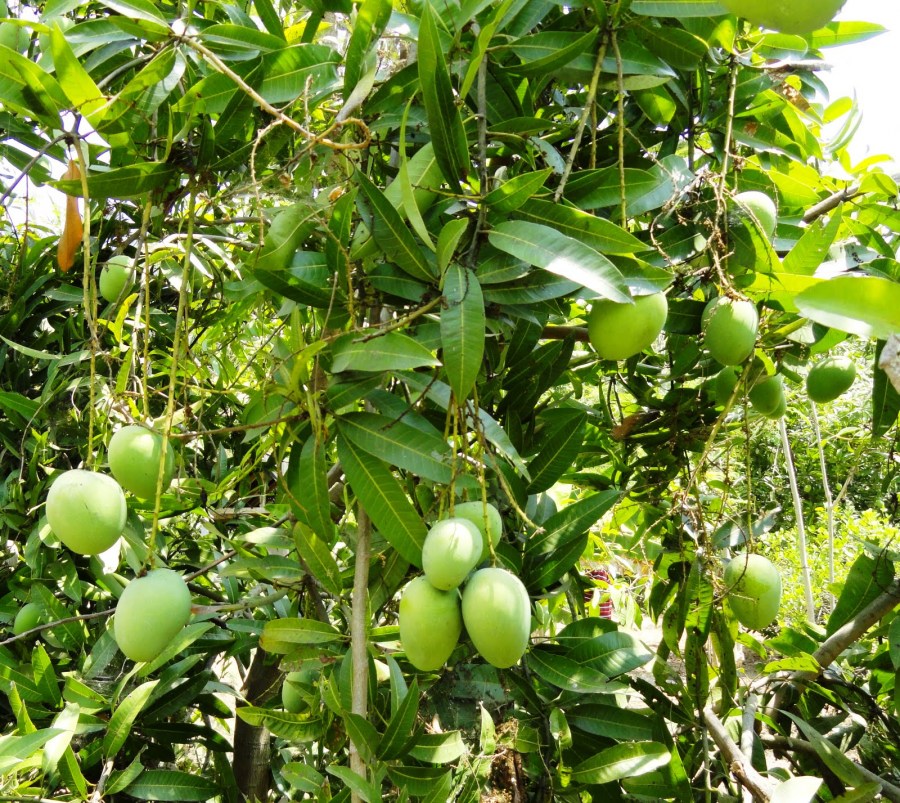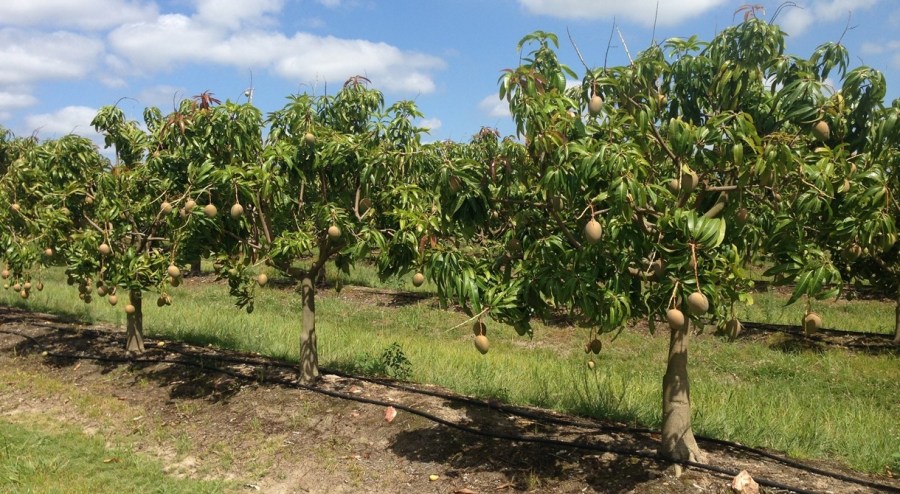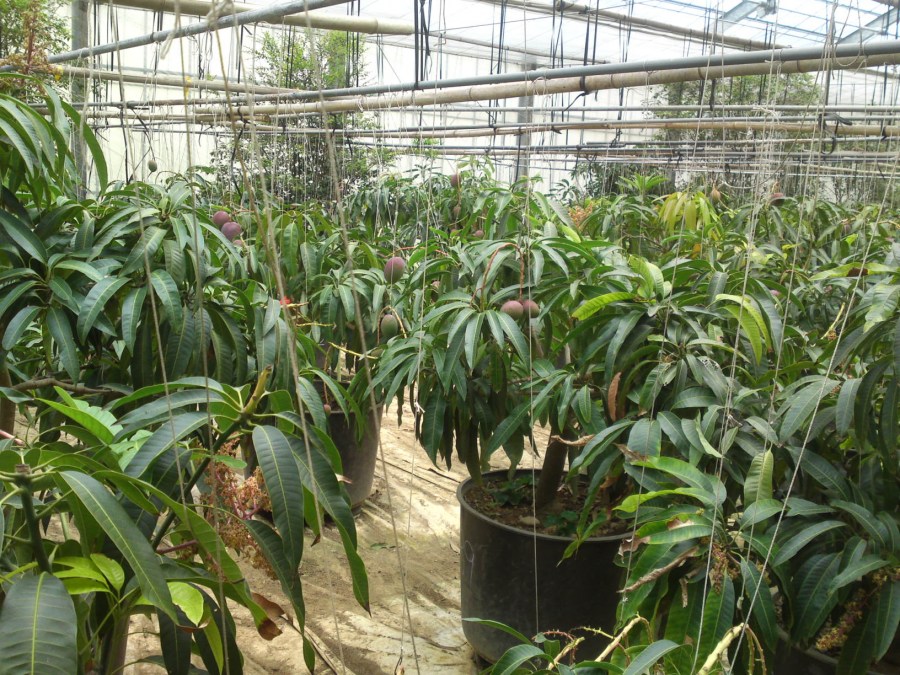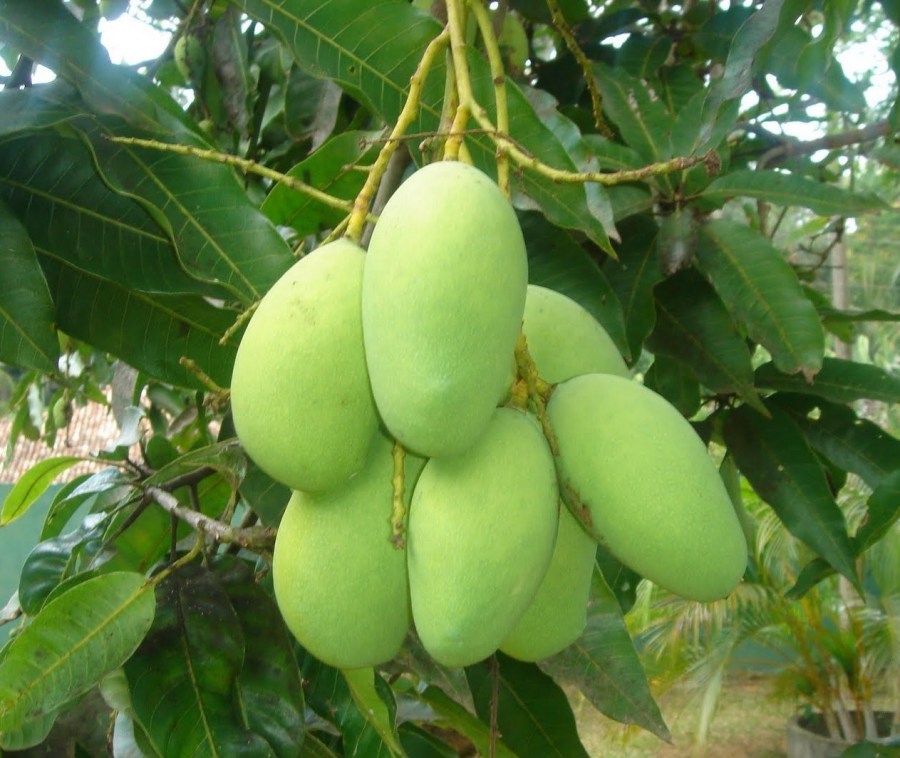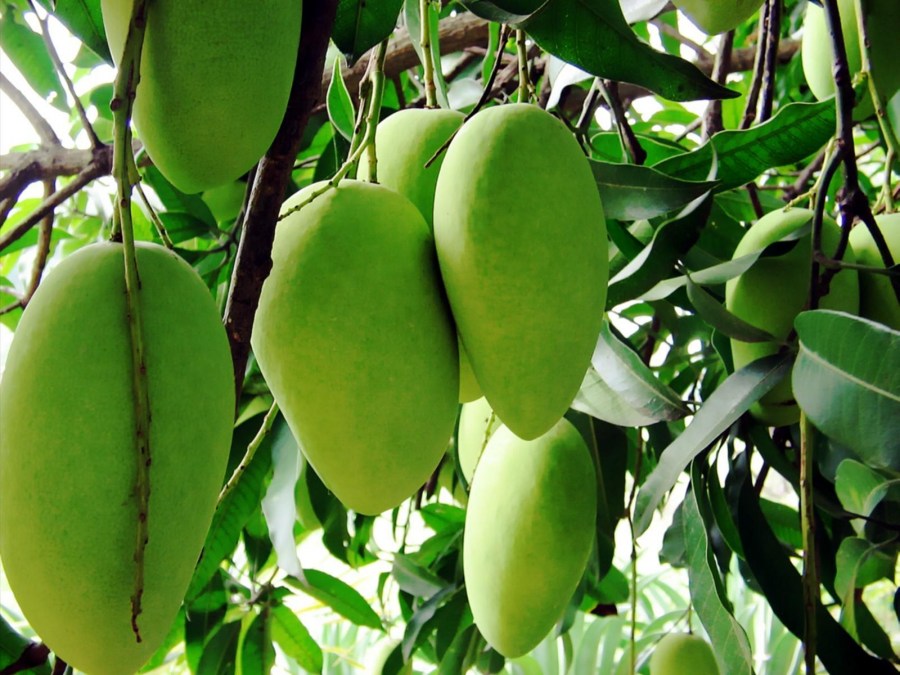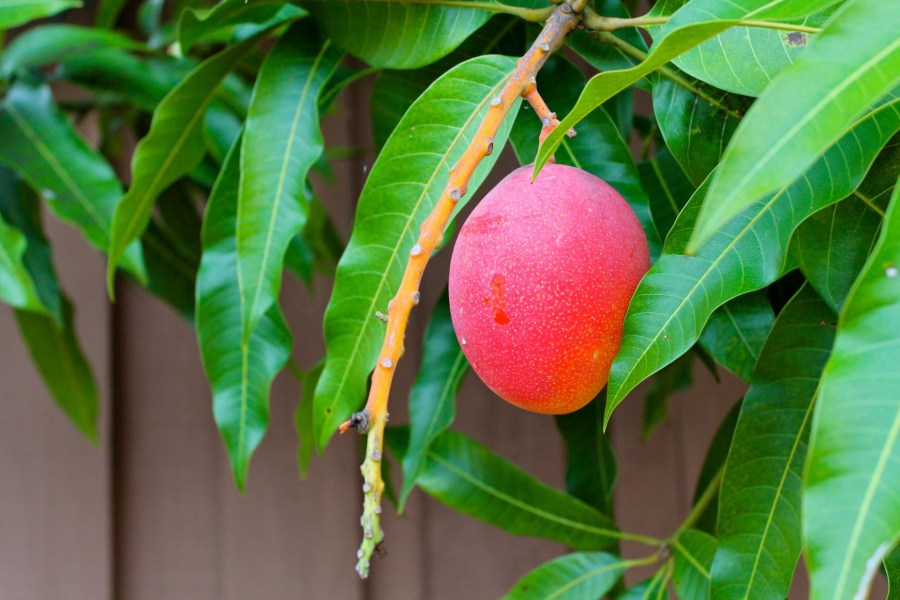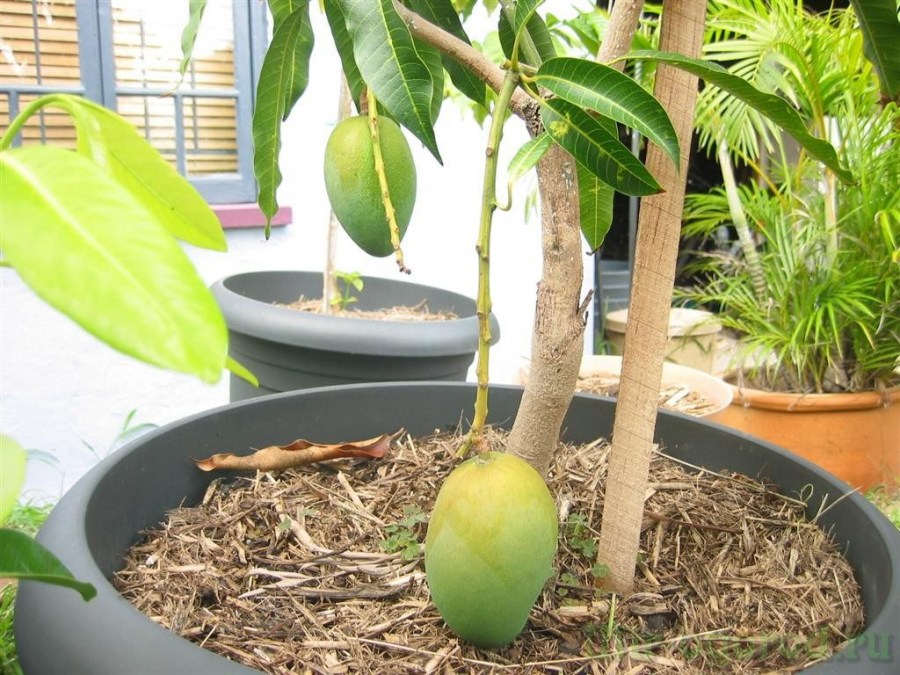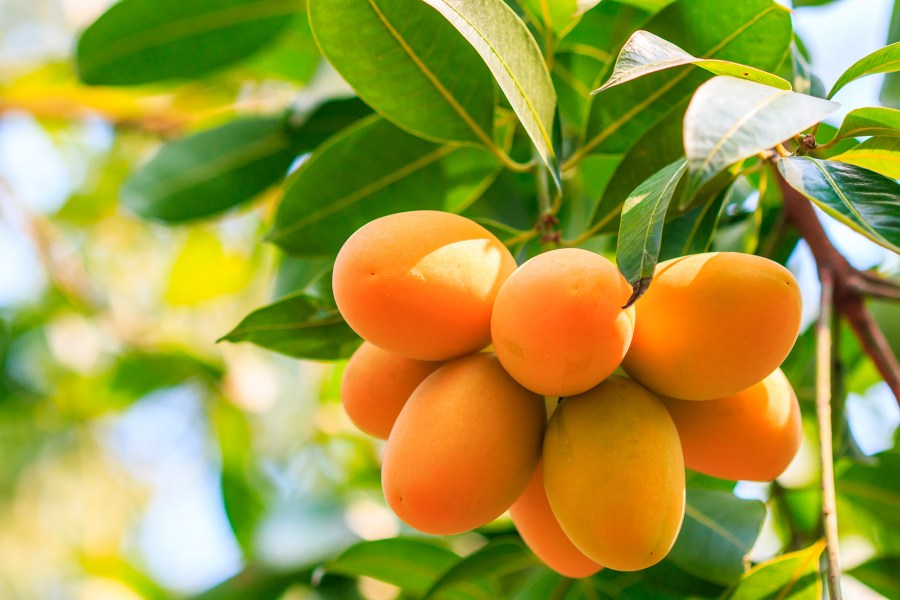Mango - growing a tree at home. Recommendations for the care and harvest (100 real photos)
Mango tree (lat. "Indian mangifer") - the most popular in the tropics. Initially, Indian mango grew in India (Assam state) and the neighboring Republic of the Union of Myanmar (formerly Burma), now it is distributed in all tropical countries. A plant from the Anacardium family (Sumakhovy). The mango tree is the national symbol of India and Pakistan.
How does mango grow?
In the humid tropics, the trunk height is up to 30 m (in an apartment up to 3 m), the crown girth is up to 10 m. The foliage is elongated, up to 5 cm wide, dark green in color. Young leaves are glossy with a yellow-green tint.
Flowering occurs from February to March, inflorescences are often yellowish in the form of a pyramid, in which from hundreds to thousands of flowers. The length of the inflorescence is sometimes up to 40 cm. The aroma of inflorescences resemble lilies.
The tree is very durable, the fruits are large (sometimes up to 2 kg each). By coloring, you can determine the maturity of the fruit. Its peel is smooth and thin, can be of various shades: yellowish-red or green, often three-colored mangoes.
The maturity of the fetus affects the pulp, it can be soft or with fibers. The fruit has a hard bone of large size inside. The fruit resembles an egg with a sweet taste.
Now there are more than 500 varieties of mango trees, they are different in shape, size, different inflorescences, colors and taste of fruits. Cultivate dwarf mangoes on plantations. Trees have proven themselves well, so these varieties are easier to grow at home.
How to grow a mango tree at home?
It has long been used the beneficial properties of mangoes in cooking and medicine, it has a lot of vitamins.
Location and lighting
Growing mangoes requires certain rules:
- For the rapid growth and development of the mango tree, it is necessary to choose the most illuminated place in the house (apartment) - this is the main thing.
- The pot should be large, the root system of the plant is developing rapidly. Mango loves the sun very much, so a lack of light will lead the plant to various diseases.
- The optimum temperature during the year should be from + 20 ° C to + 26 ° C, a deviation from the norm can adversely affect the development of the plant. In winter, at least + 18 degrees of heat.
Soil selection
Mango tree requires quite loose soil. Young plants need “light” soil with a pH of 5.5-7.5. After 5 years, transplanted, where the mixture: 2 parts of turf, 1 part of humus with sand. The pot must be with a hole. Important! Do not forget that the plant needs good drainage to remove excess moisture.
Humidity and watering
At home, mangoes need moist land in order for the tree to create a familiar tropical climate. It is necessary to water abundantly 1-3 times a week with warm water. Between watering the soil should dry out a little. In winter, reduce watering. Spray a tree regularly, especially in winter.
During the flowering period, watering is minimized as much as possible. But pay special attention at this time to numerous leaves, they can wilt with a lack of water.
After harvesting the fruit, watering is reinforced again so that the plant can quickly regain its strength and continue to grow. Maintain moisture in moderation, it is important for young trees, they do not like dry soil.
Excess dampness is also contraindicated, but dry air can do much harm. Needs average humidity in the room.
Top dressing
In order to form a beautiful crown of a tree, we need additional nutrition at the beginning of spring - this is a time of rapid growth.Organic fertilizers should be applied to the soil once every 2 weeks: in spring and summer. An additional 3 times a year can be fed with micronutrient fertilizers.
Autumn mangoes should not be fertilized. For the proper development of the tree, it is better to correctly select a balanced fertilizer, then the plant will delight the hosts with delicious fruits.
Reproduction and care
Previously, mangoes were propagated by seeds or grafts. Plants are inoculated only in the summer, which guaranteed the result. Any soil is suitable, but the soil must be loose, with good drainage.
The grafted young tree is trying to bloom early and bear fruit, but you need to prune the panicle with flowers after full bloom. It will be possible to leave inflorescences only after 1-2 vaccinations.
Cut the plant in the spring by 1/3, and pinch the tops so that they are better bushy. But pruning delays flowering. Transplantation is possible in the spring.
Bloom
Yellow-green or red flowers are collected in racemose inflorescences, they can be seen from December to the end of April. For fruits you need pollination. The development of the fetus is 3-6 months.
Important! The first fruit harvest is minimal, so the young tree protects itself from complete exhaustion, but there will be several of the largest fruits. Every year, the crop will grow.
Dangerous pests and diseases
A great danger for a tropical tree are spider mites. Their sign is the appeared web. The reason may be high temperature and lack of humidity. In warm time - thrips that feed on leaf juice. This can be seen by discoloration or discoloration of the leaves.
Common Mango Diseases:
- powdery mildew - white coating on the leaves;
- bacteriosis - spots on the leaves;
- anthracnose.
Dry air will color the tips of the leaves brown. And in the cold, flowers just fall off.
Toxicity
Mango tree foliage contains essential oils, they have an irritating effect. Therefore, their pets should be avoided.
How to plant a bone?
To grow a tree at home, you need to choose a ripe mango, preferably an overripe fruit, in it a seed can be burst and with a sprout.
It is necessary to cut the fruit in length, turn half the fruit in opposite directions to free the bone. Then rinse the bone with water, drop shallow in a 9 cm pot (humus with turf). You can create a greenhouse on top (for example, from a package).
Advice! If the whole bone, experts recommend soaking it for 2-3 days in a solution of potassium permanganate or water, wait until it grows. You can open the bone, get that inside - the embryo is shaped like a bean. It will grow faster.
The bone of the fetus cannot be stored for a long time, the quality of the seedlings drops sharply.
At an average temperature of about 23 degrees, sprouts will appear in 3-4 weeks. The bush will need to be replanted annually in a large capacity, the soil composition is the same. After 3-5 years, when transplanting to the bottom, you need to place small pebbles or a mixture of coarse sand (river).
Choose a sunny place, if the battery, you will need frequent spraying with warm water. Fertilizers that are suitable for palm trees and oleander bushes are required.
Having grown mango from a seed, a bush can be given various forms: a ball, a pyramid, or a cube. It will delight you with flowers only after a few years. Different varieties of mangoes can be seen in our gallery on the photo or on the Internet.
Mango Photo
Fencing for beds: 80 photos of popular and best modern ideas
Laying paving slabs - 85 photos of garden paths and the specifics of their laying
How to build a home inexpensively and quickly? See instructions here + 100 photos
Daffodil flower (80 photos) - how to grow and care at home
Join the discussion:
